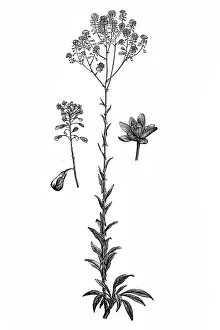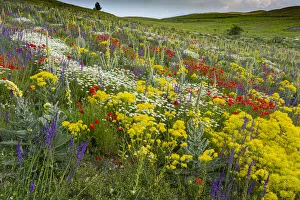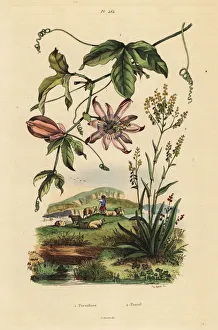Isatis Collection
Isatis tinctoria, also known as woad or glastum, is a fascinating plant with a rich history in the world of dyeing
All Professionally Made to Order for Quick Shipping
Isatis tinctoria, also known as woad or glastum, is a fascinating plant with a rich history in the world of dyeing. This antique botany illustration showcases the beauty of woad and its vibrant blue pigment. In this picturesque scene from Abruzzo, Italy, a fallow field bursts into bloom with an array of colorful flowers including poppy, corn chamomile, Olympian mullein, purple toadflax, and of course, woad. The sight is truly breathtaking and highlights the diversity of nature's palette. Woad species like Isatis tinctoria have been used for centuries as natural dyes. Its leaves produce a deep blue hue that has been utilized by ancient civilizations and even medieval knights to color fabrics. Dyer's woad holds great significance in the art of textile dyeing. This image captures the delicate balance between passionflower and dyer's woad intertwining gracefully amidst lush greenery. It symbolizes the harmonious relationship between nature and human creativity. The versatility of woad is evident in this snapshot where it coexists with dyer's rocket - another plant commonly used for dyeing purposes. Together they represent the endless possibilities that can be achieved through experimentation with natural pigments. Curtis British Entomology Plate 734 showcases not only the botanical beauty but also hints at potential insect interactions within this ecosystem surrounding Isatis tinctoria.












